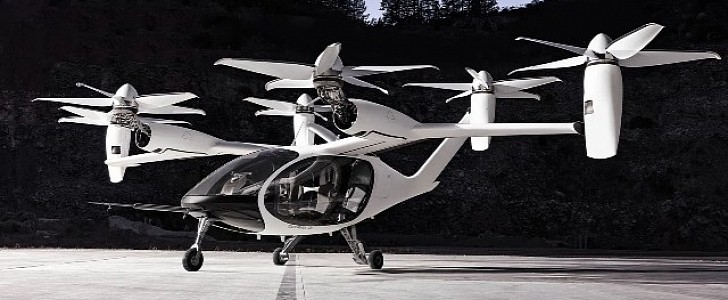There are many efforts being made for the creation of a functional system capable of supporting autonomous electric Vertical Take-Off and Landing (eVTOL) aircraft. Yet despite the huge strides made when it comes to the technologies that go into the machines themselves or the infrastructure to support them, large-scale use of eVTOLs is still a long time away.
Or maybe not, given how the mighty U.S. Air Force is now pushing for these things to become real and, more importantly, work as advertised.
Sometime last year, USAF let it slip that in 2021 it will begin funding eVTOL projects, and to make sure everyone gets the message, even conducted a demonstration of such hardware at Camp Mabry in Austin, Texas. And now that we’re fresh into the new year, here comes another development.
As part of its Agility Prime program, USAF is giving a first contract to Metawave Corporation for the development of a high-precision, all-weather sensing solution for eVTOLs.
The platform to be used as a base for the new technology is called Spektra, an analog antenna system used in the auto industry to provide radar capabilities for up to 330 meters (1,082 feet) and aid with adaptive cruise control, lane change assist, and automated emergency braking.
Metawave will work with the Arizona State University Center for Wireless Information Systems and Computational Architectures to modify Spektra to support longer ranges and navigation in three-dimensional space.
"Both the automotive and eVTOL markets require the highest level of precision delivered by Spektra," Achour said. "For both applications, the ability to reliably distinguish between several objects close together in all weather and light conditions is an important capability for all phases of transport, including flight. The most significant difference is the operational range of the radar."
USAF plans to have ready technologies that could be used in human-rated eVTOLs by 2023.
Sometime last year, USAF let it slip that in 2021 it will begin funding eVTOL projects, and to make sure everyone gets the message, even conducted a demonstration of such hardware at Camp Mabry in Austin, Texas. And now that we’re fresh into the new year, here comes another development.
As part of its Agility Prime program, USAF is giving a first contract to Metawave Corporation for the development of a high-precision, all-weather sensing solution for eVTOLs.
The platform to be used as a base for the new technology is called Spektra, an analog antenna system used in the auto industry to provide radar capabilities for up to 330 meters (1,082 feet) and aid with adaptive cruise control, lane change assist, and automated emergency braking.
Metawave will work with the Arizona State University Center for Wireless Information Systems and Computational Architectures to modify Spektra to support longer ranges and navigation in three-dimensional space.
"Both the automotive and eVTOL markets require the highest level of precision delivered by Spektra," Achour said. "For both applications, the ability to reliably distinguish between several objects close together in all weather and light conditions is an important capability for all phases of transport, including flight. The most significant difference is the operational range of the radar."
USAF plans to have ready technologies that could be used in human-rated eVTOLs by 2023.

